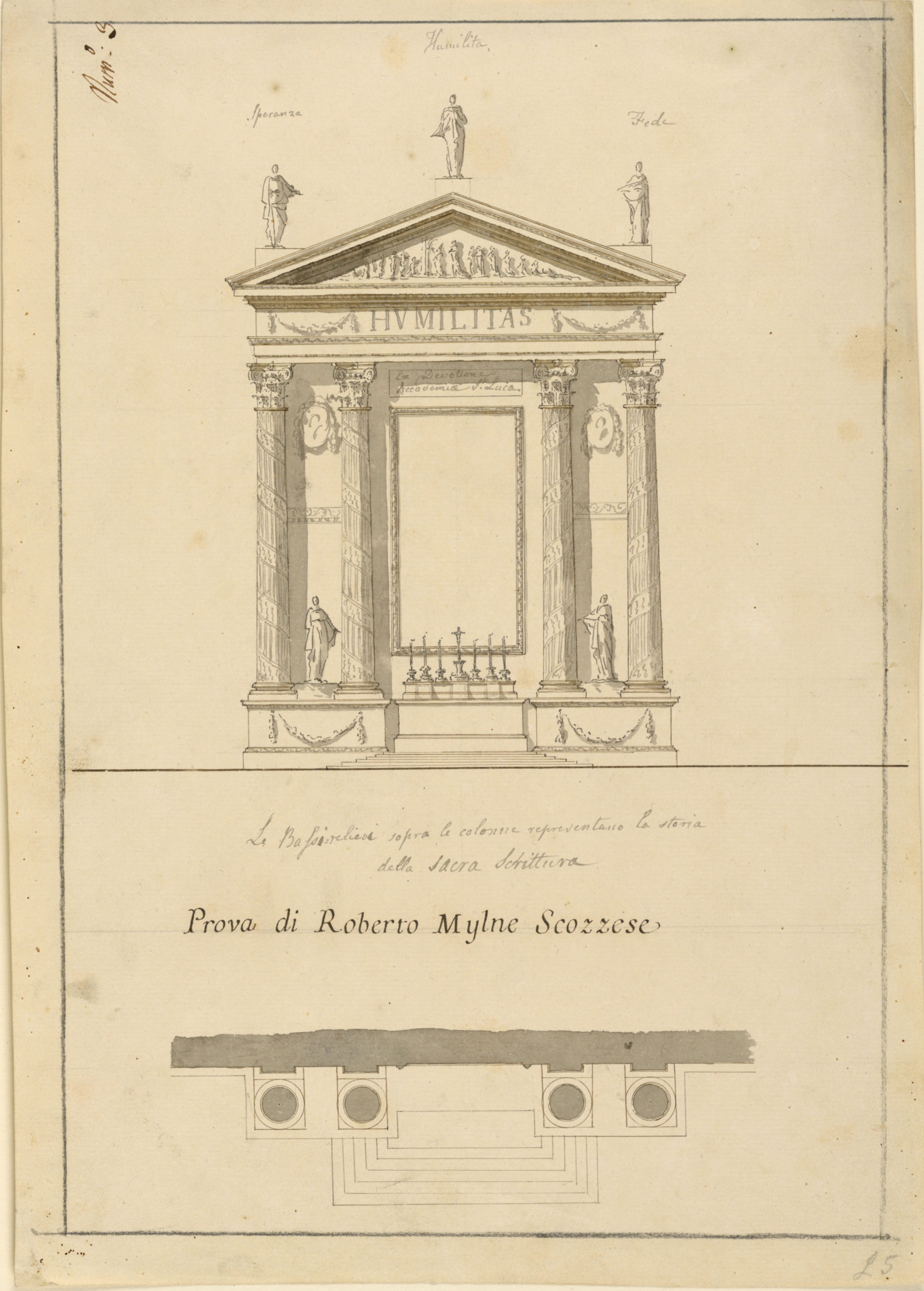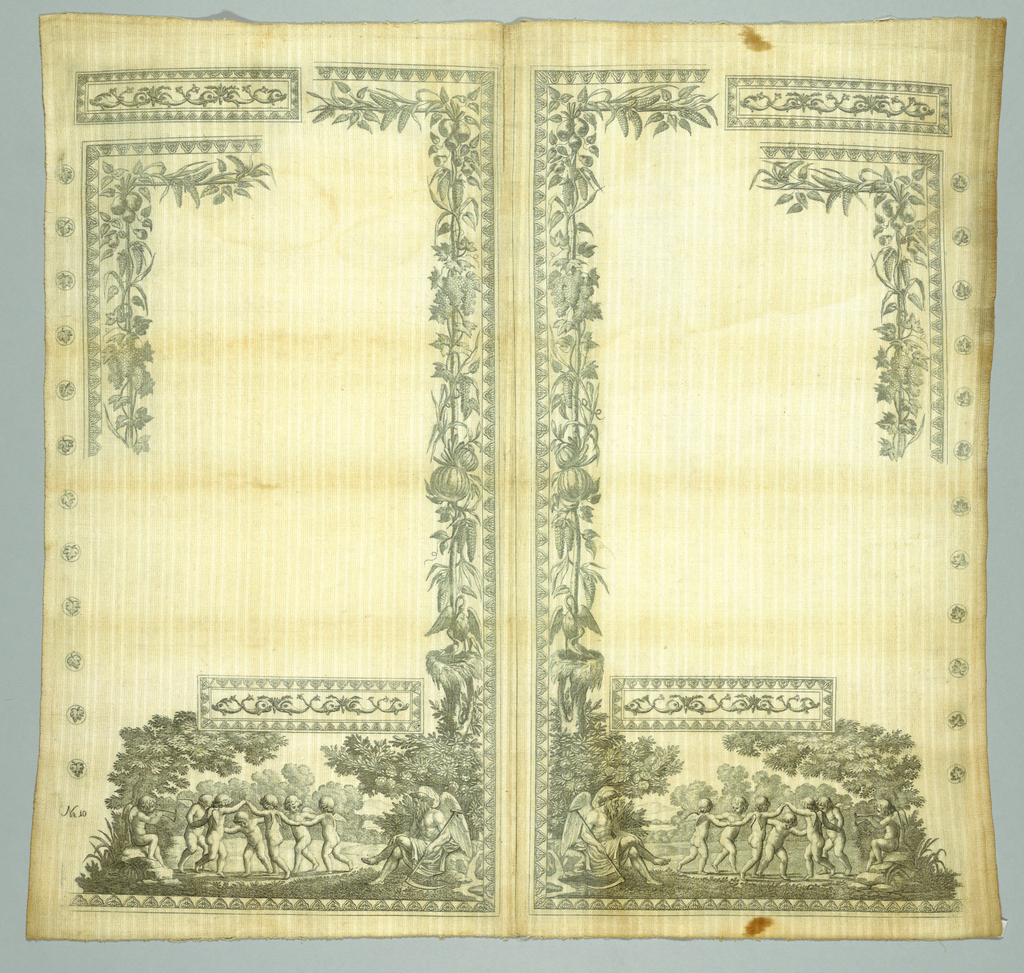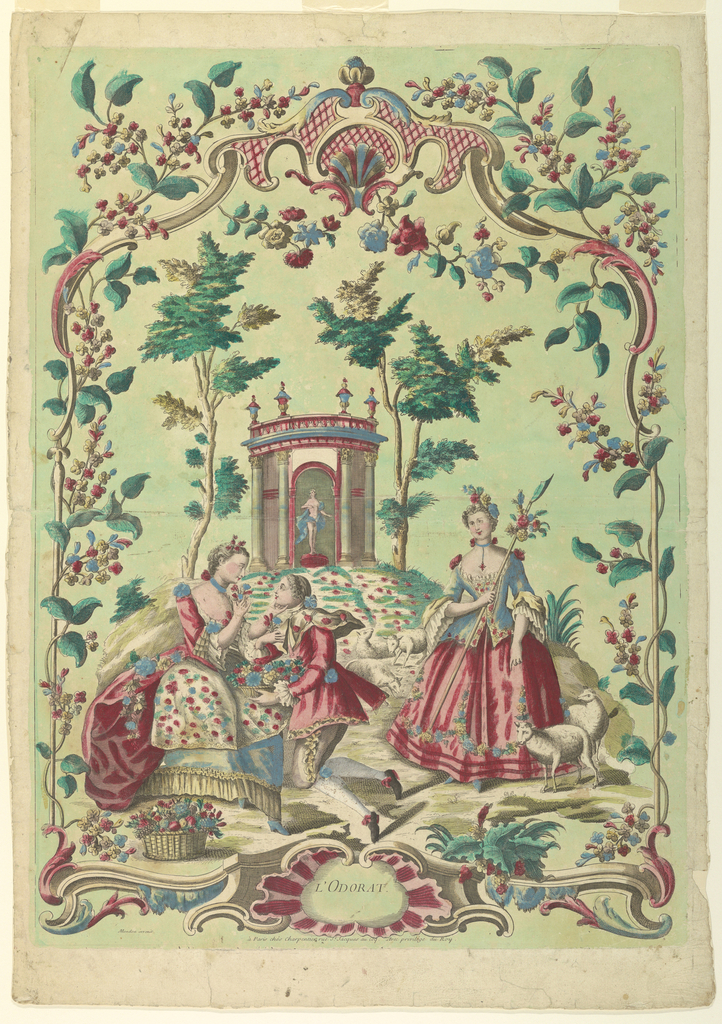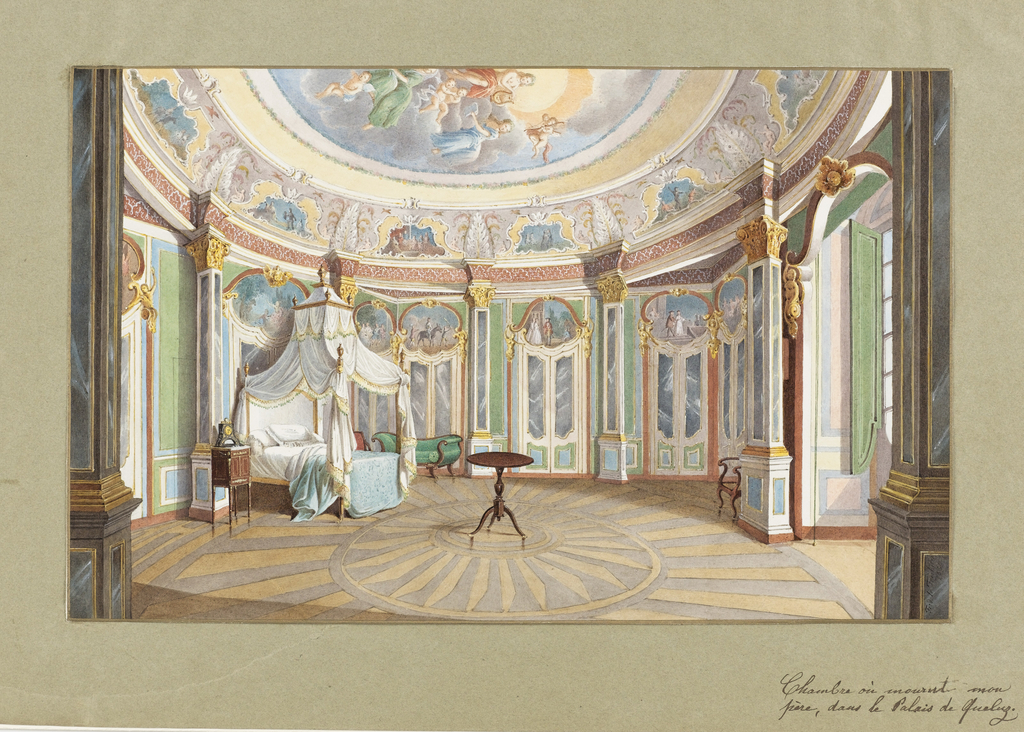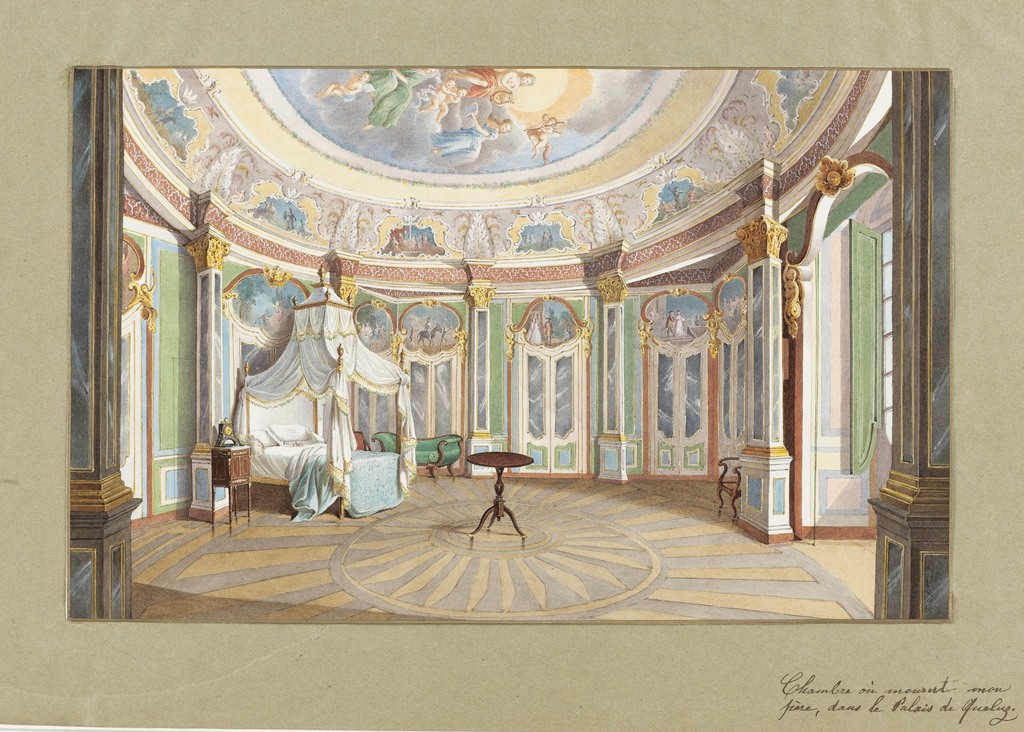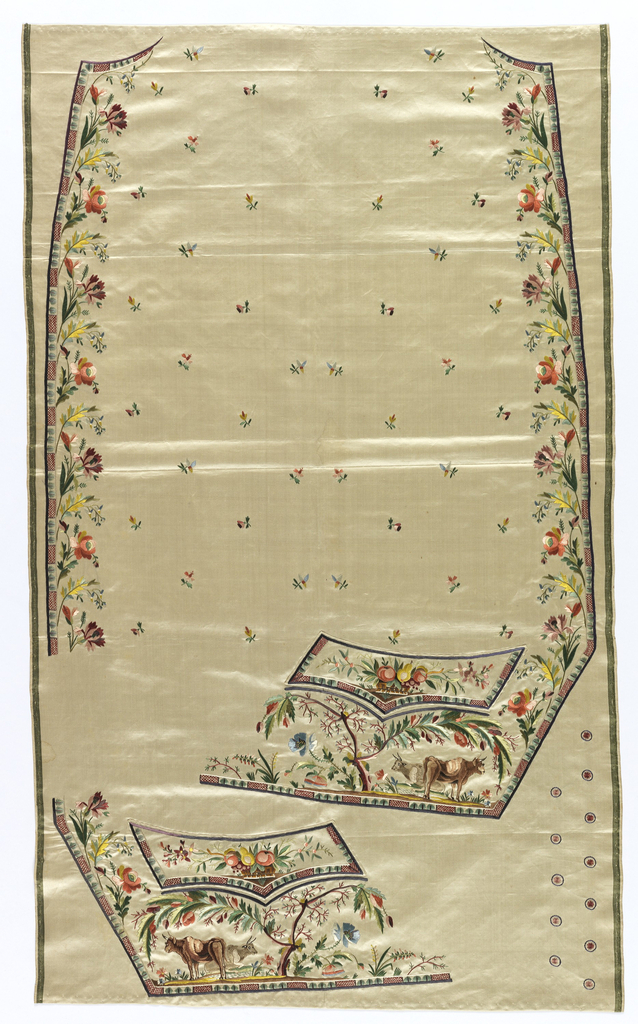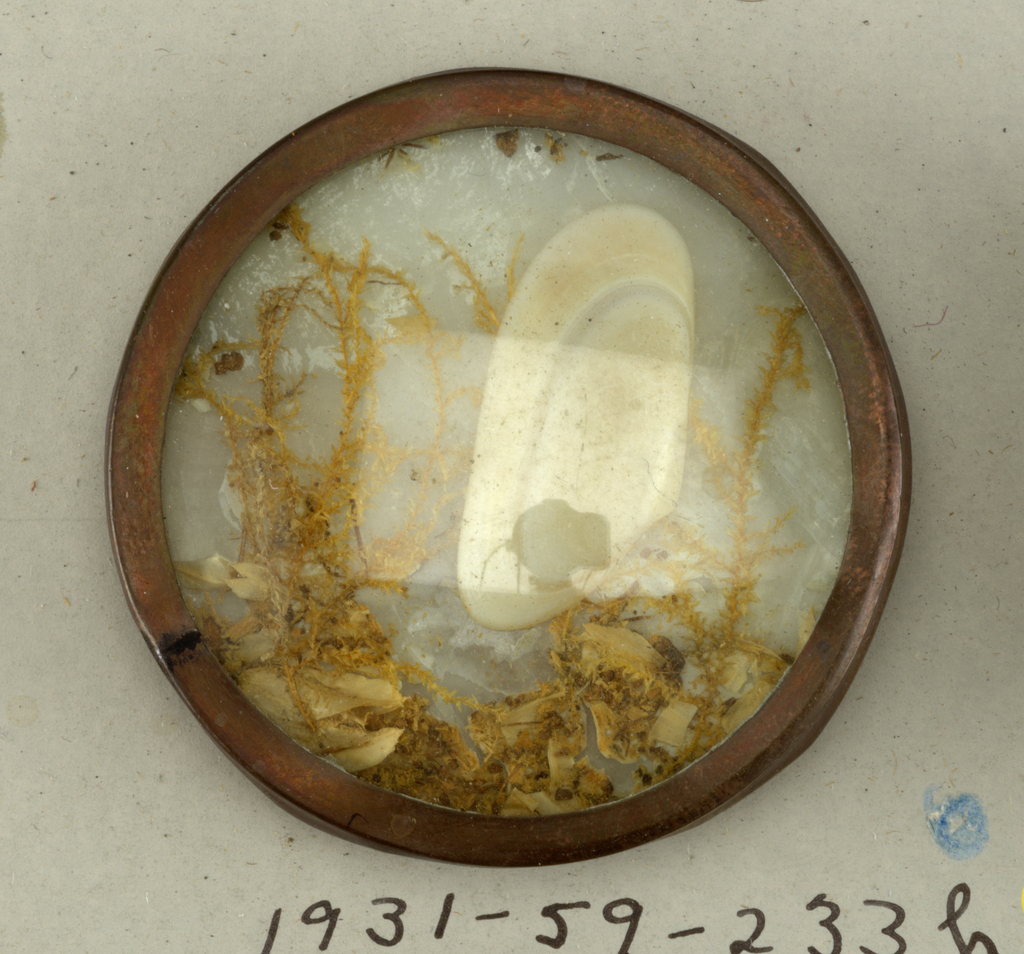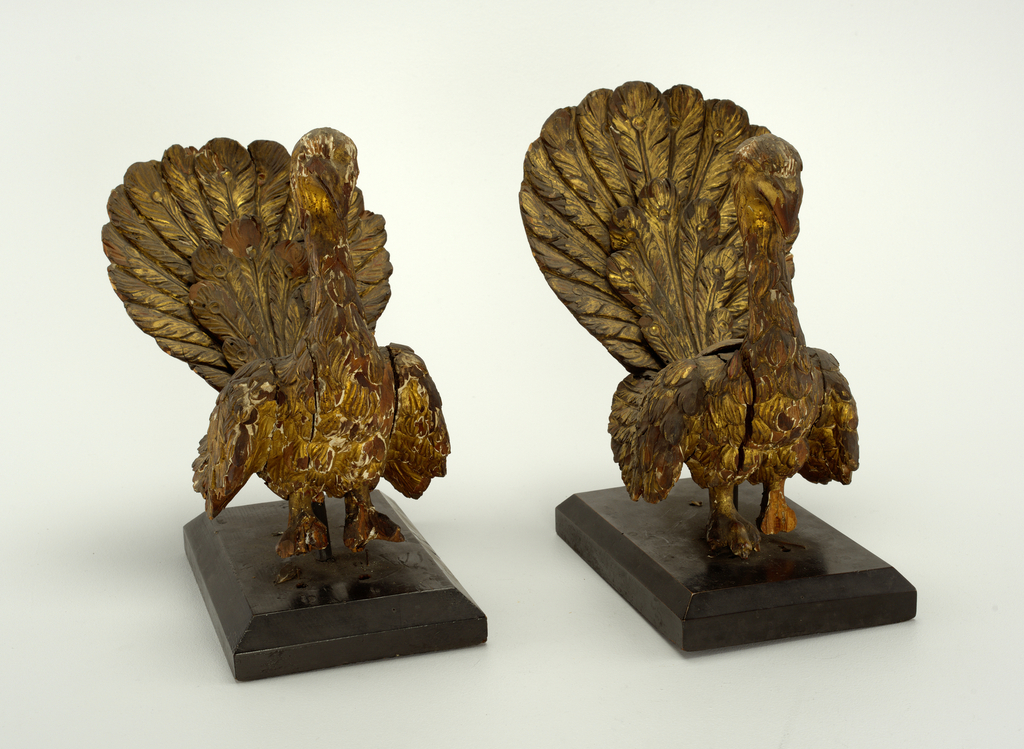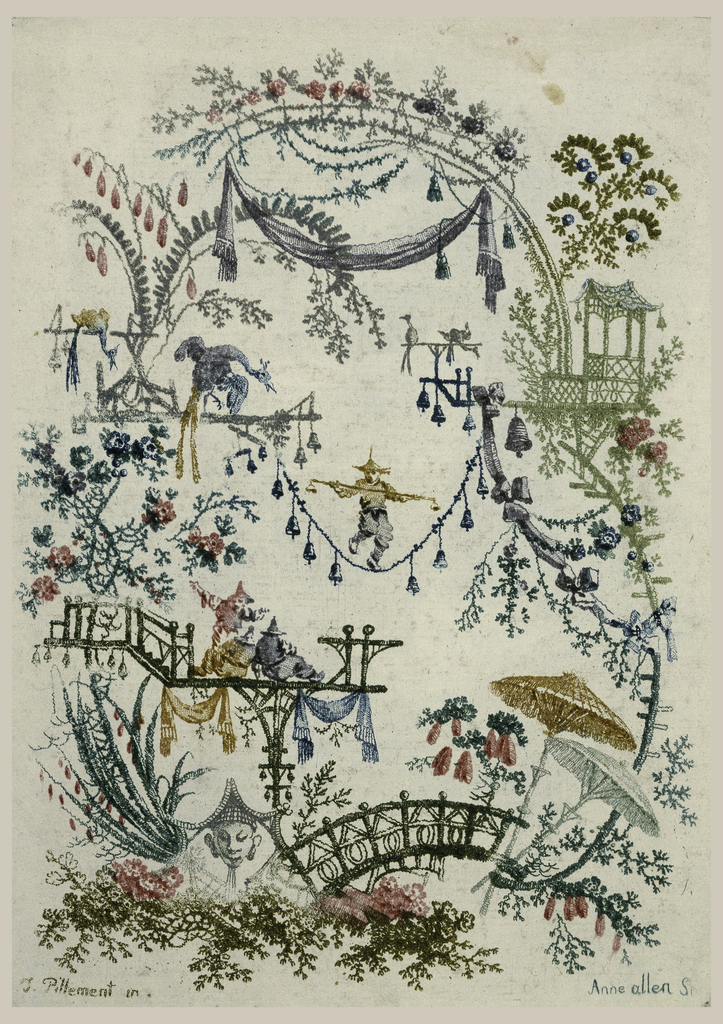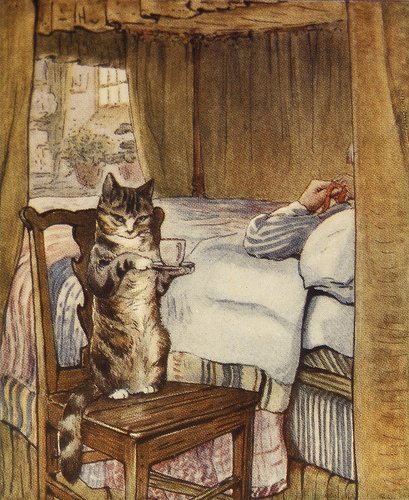On September 23rd, 1758, an aspiring architect named Robert Mylne (1733 – 1811) wrote to his younger brother William (1734 – 1790) with astonishing news. At twenty-four years old, Robert had just become the first Briton awarded top prize in the Concorso Clementino, a famous architecture competition held every three years in Rome.[1] This drawing...
Author: Virginia Pollock While this textile might seem unrecognizable to modern eyes, to consumers in eighteenth-century France this textile was an object of fashionable and economic significance. These uncut waistcoat fronts display the layout of a pattern, adorned with copperplate printed motifs of vegetal imagery, intertwined dolphins, and a wooded scene at the bottom with...
In celebration of our new exhibition The Senses: Design Beyond Vision, this Object of the Day post explores the multisensory experience of an object in Cooper Hewitt’s permanent collection. This bright, hand-colored print dated to about 1750 and signed by François-Thomas Mondon depicts a group of figures in a landscape composed of trees, flowers, and...
This Object of the Day celebrates one of many treasured objects given by Clare and Eugene V. Thaw to Cooper Hewitt, Smithsonian Design Museum. It is republished here in memory of Eugene V. Thaw. Click on this link to read more about the Thaws and their gifts to Cooper Hewitt. This polychrome interior hides architectural, visual,...
This polychrome interior hides architectural, visual, and historic secrets. The drawing depicts the bedroom of King Pedro IV in the Palace of Queluz in the municipality of Sintra, just west of Lisbon. The Palace was originally constructed in the eighteenth century under King Pedro III as a summer home. It remained within the Portuguese royal family...
Author: Kat Duiguid September is New York Textile Month! In celebration, members of the Textile Society of America will author Object of the Day for the month. A non-profit professional organization of scholars, educators, and artists in the field of textiles, TSA provides an international forum for the exchange and dissemination of information about textiles...
This button, from a set of nine, offers the viewer a chance to peek into the age of Enlightenment, a period of time when the human mind was breaking free from the constraints of the Church and the limitations of the Middle Ages. The Renaissance, primarily spanning the fifteenth through sixteenth centuries, is often thought...
“Can you help us in identifying where our birds were made?”[1] This inquiry is one of numerous others regarding two fowl from a 1968 letter from Catherine Lynn Frangiamore, then an assistant in the Department of Decorative Arts (now Product Design and Decorative Arts) at Cooper Hewitt, to Lino Sandonnini, then director of the Museo...
What is the importance of being able to place a name upon the things we create? Perhaps it gives one the ability to become more than just a faceless member of a crowd, to leave behind a mark of what they have made. Historically, women have often remained nameless with the things they create. This is...
Some of the most significant architects of our era have cited designer and architect Giovanni Battista Piranesi’s influence on their work. Learn how architects Peter Eisenman, Founder and Principal, Eisenman Architects; Michael Graves, Founder and Principal, Michael Graves & Associates; and Robert Venturi, Principal of Venturi, Scott Brown and Associates are inspired by Piranesi’s eclectic...
During its first wave of influence, the sinuous and sensuous curves of rococo rapidly spread across France, Holland, and Germany,developing a unique personality in each location. Cooper-Hewitt invites curators Henry Hawley, Reinier Baarsen, and Wolfram Koeppe to a panel discussion that examines the diaspora of rococo during the eighteenth century, and the regional differences in...
From its inception, exuberant, organic, and sensuous rococo style has inspired subsequent revivals and new movements. As rococo’s influence once again gains momentum, Cooper-Hewitt invites scholars Laura Auricchio and Paul Greenhalgh to discuss the social and cultural histories behind rococo in eighteenth-century France and its revival in Art Nouveau at the end of the nineteenth...
Over the past several weeks, I explored the Cooper-Hewitt Museum Design Museum Library’s collection of illustrated children’s books as part of the Arts Intern program through Studio in a School. During my time in the Library, I have discovered seemingly endless treasures in the children’s book collection, including a vast range of illustrative styles,...
The third of the grand challenges posed by Secretary Wayne Clough for the new strategic plan of the Smithsonian is explained by the sentence: “As a steward and ambassador of cultural connections, with a presence in some 100 countries and expertise and collections that encompass the globe, we will build bridges of mutual respect, and...
